By using the homepage features correctly, you can increase engagement with your target audience and effectively promote your products or services. In this guide, you will learn step by step how to make optimal use of the various tools and options on the Facebook homepage.
Main Takeaways
- The Facebook homepage offers numerous functions for managing your shop, interacting with customers, and automating responses.
- Using Messenger tools can promote direct interaction with potential customers.
- Automated responses and templates help you communicate more efficiently and improve customer service.
- The job ads management function enables you to find new employees and receive suitable applications.
Step-by-Step Guide
1. Accessing the homepage features
To use the homepage features, first go to the left side of the Business Suite and slightly collapse the view. You will then see a range of tools, including "Manage Shop."
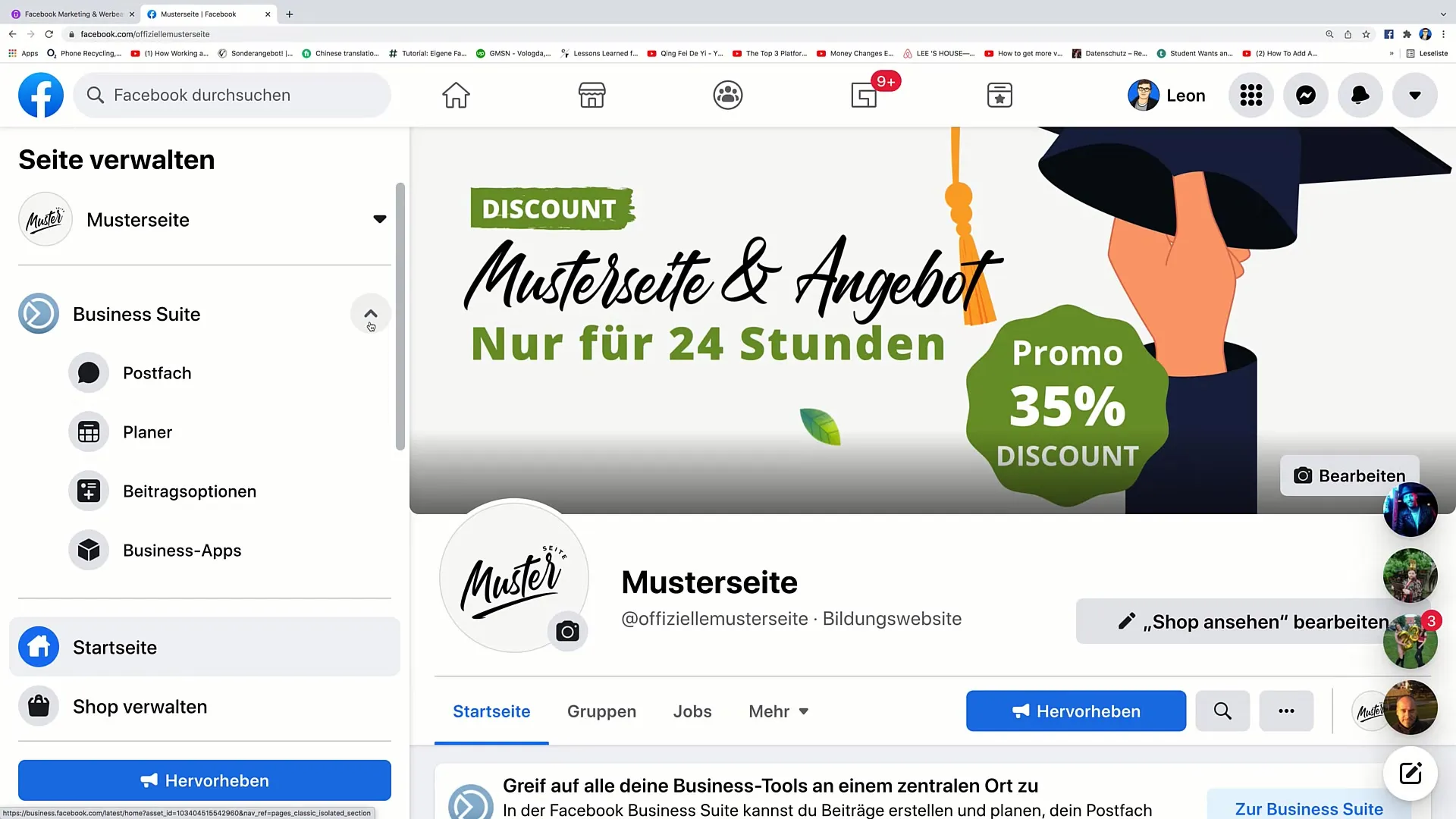
2. Managing your Shop
When you click on "Manage Shop," you have the opportunity to edit your shop. You can monitor the sales of your products and find out which products sell well or may encounter problems. Additionally, you can conduct a shop preview to see how your products are presented to customers.
3. Using Messenger tools
Scroll down a bit to the Messenger tools. Here you can create a Messenger post. The system will give you a reminder if you haven't created a post for several days. You can add a new post, and it will be sent to users via Messenger.
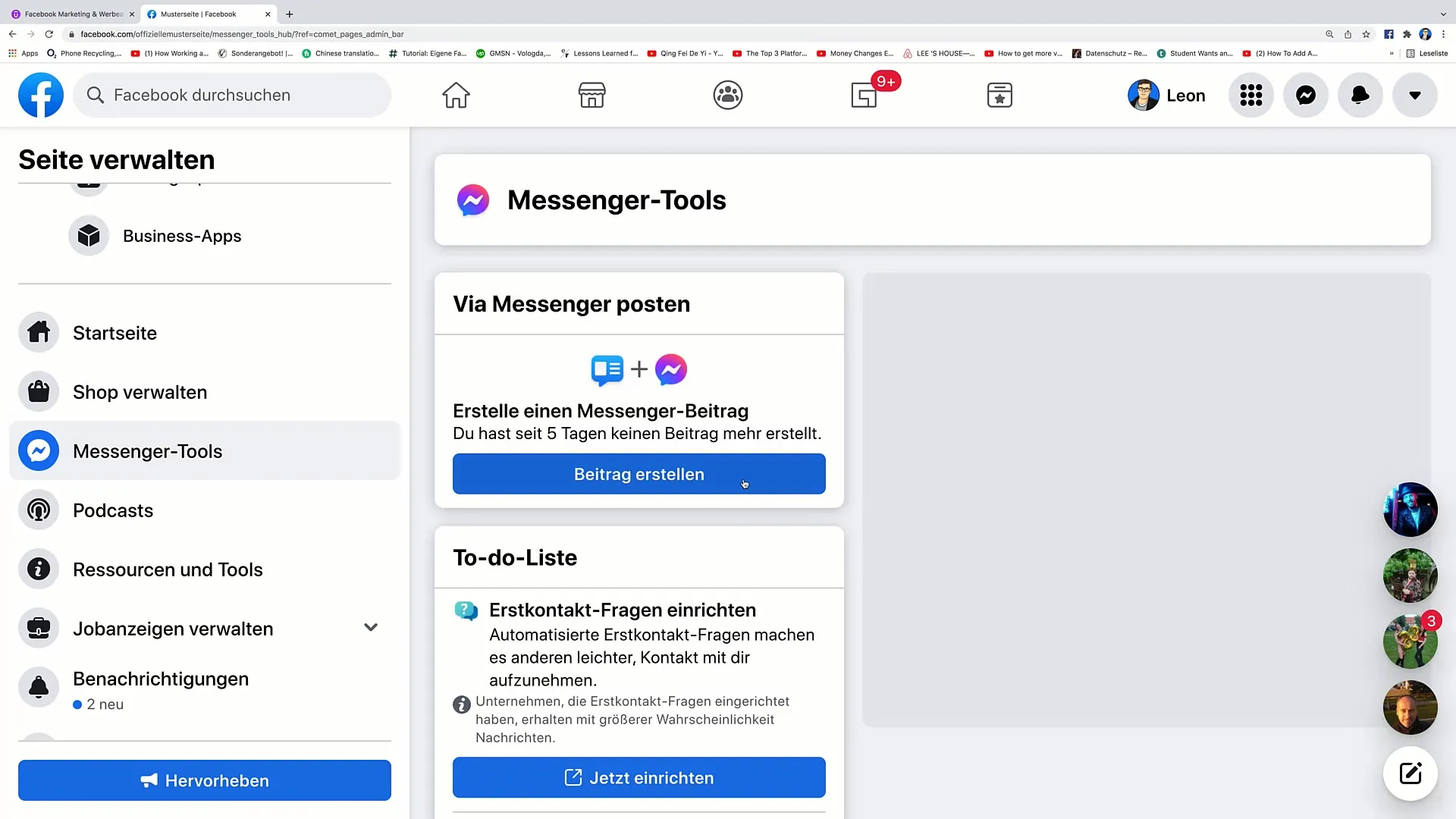
4. Adding preliminary contact questions
You can create basic questions that users frequently ask. To do this, go to the "To-Do" section and add a new question, for example, "When are you open?" You can then formulate an automated response that will be sent to the user when this question is asked.
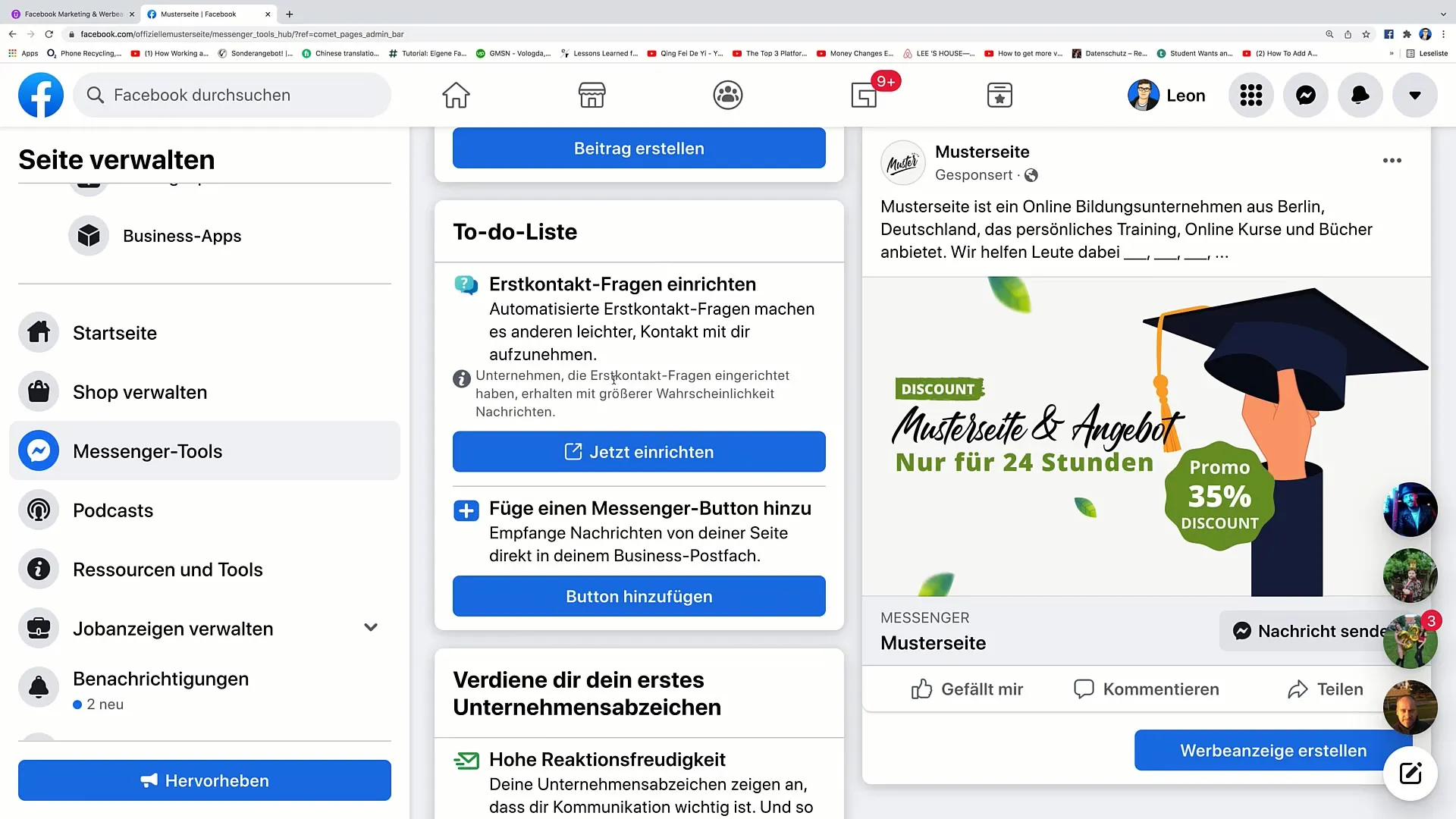
5. Personalizing responses
In the automated response, you have the option to include the customer's name. This increases the personal touch of your communication and enhances satisfaction. You can tailor the message to provide automated responses to common customer inquiries.
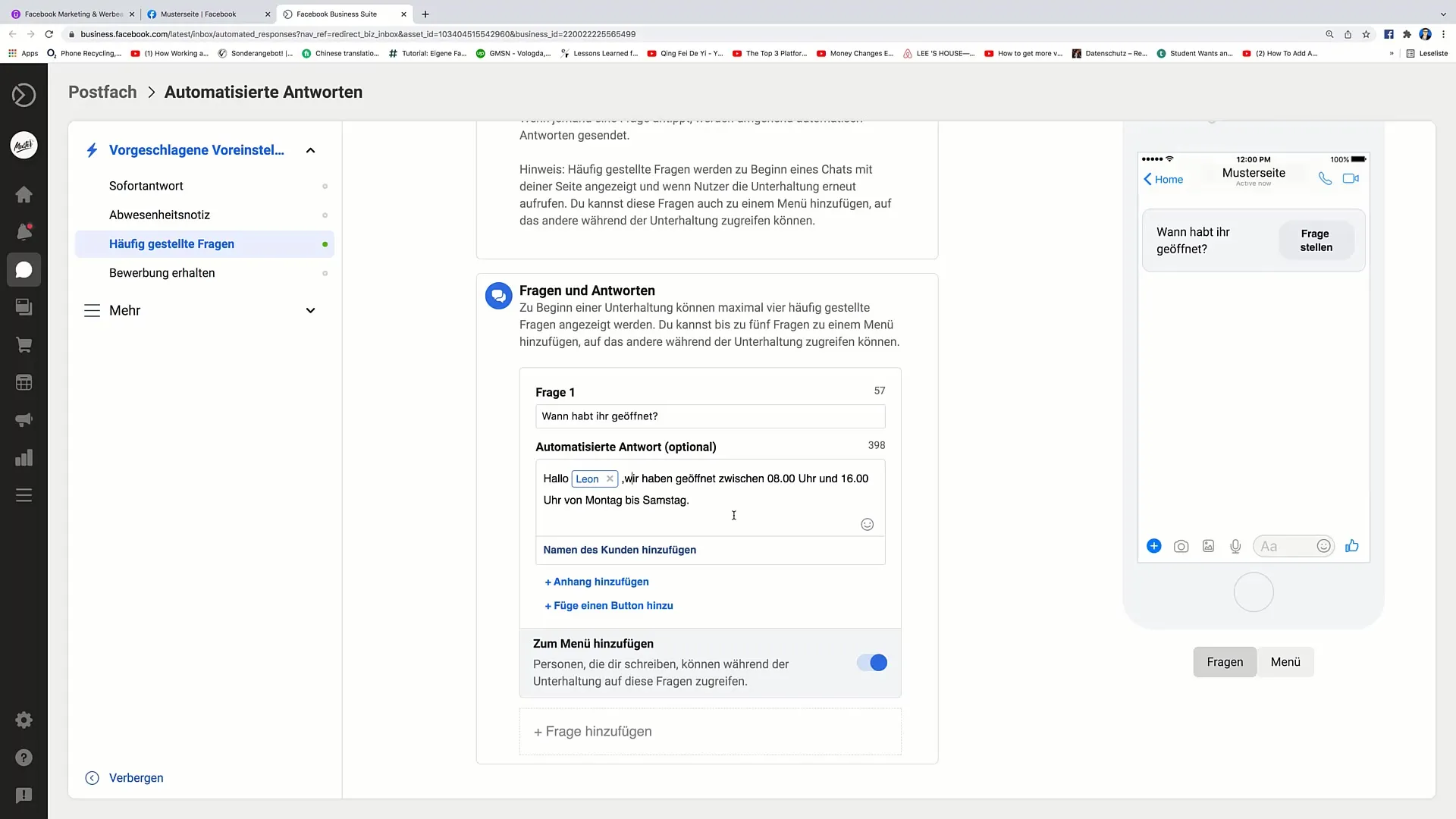
6. Using buttons in responses
You can also add a button to your automated response. Clicking on this button will direct users to a specific URL, allowing you to generate direct traffic to your website.
7. Managing and Creating Job Ads
Another important aspect is managing job ads. If you want to create a job ad, click on "Create Job Ad" and enter the necessary information, such as job title, location, and job description.
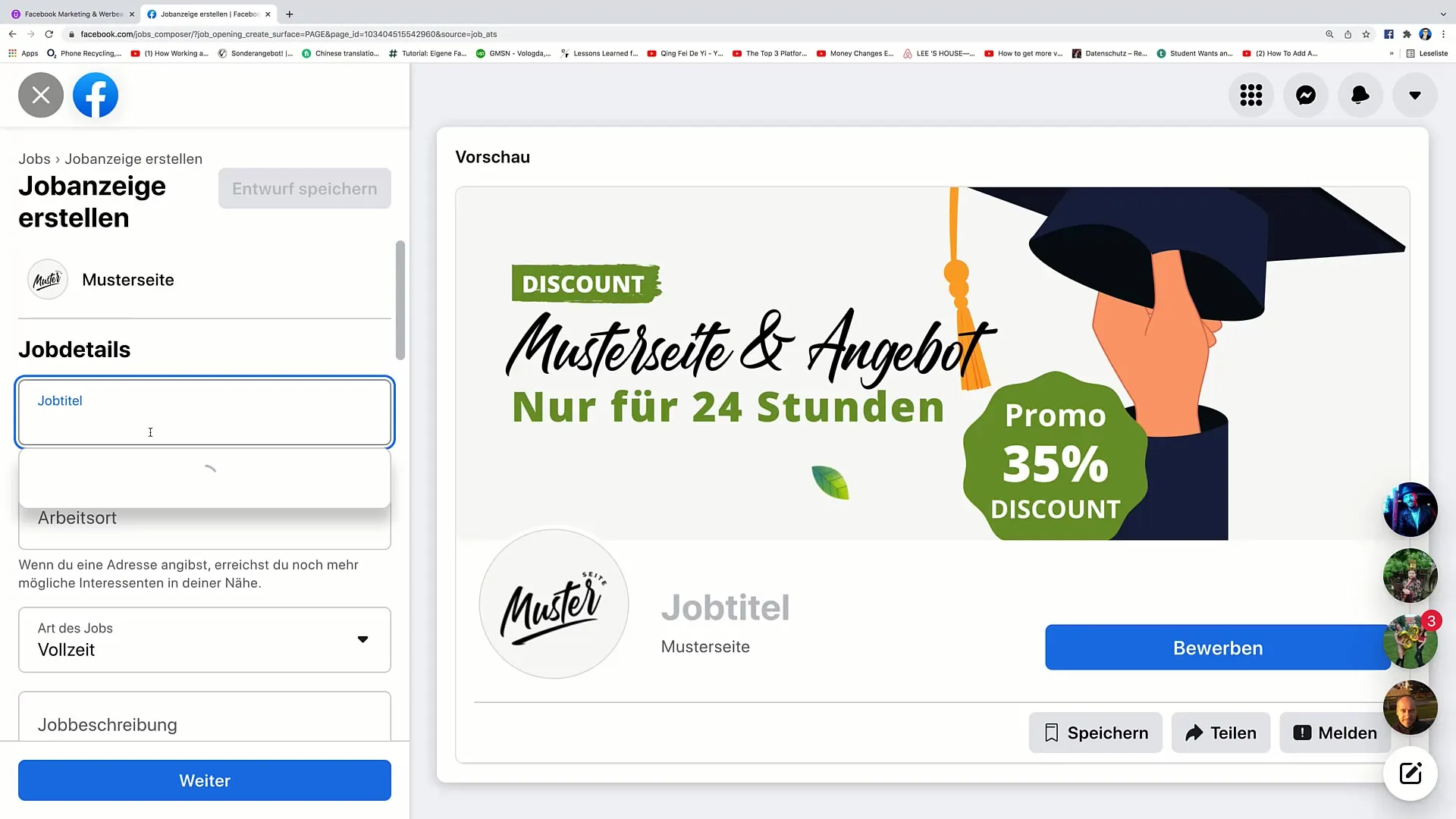
8. Accepting and Managing Applications
You will receive applications directly through Facebook. You can view them through the dashboard and filter them based on various criteria, such as the application status or specific interests of the applicants.
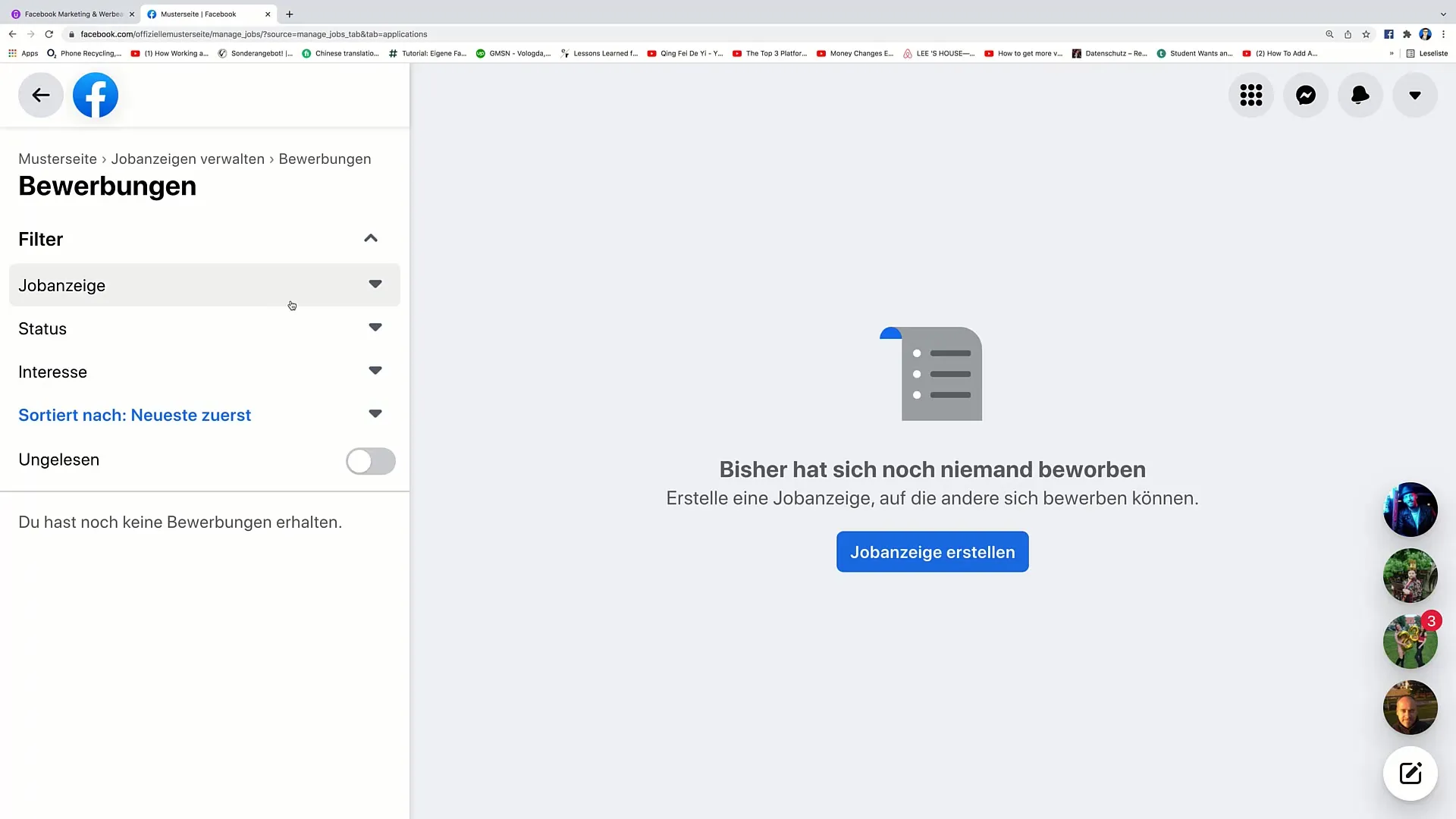
9. Insights and Page Analysis
Finally, you can use insights to see how well your page is performing. Here you can view different metrics such as interactions, reach, and many other statistics.
10. Optimizing Advertisements
If you want to create advertisements, I recommend doing so not through the Ad Center but through the Ads Manager. The Ads Manager offers more extensive features for creating effective campaigns.
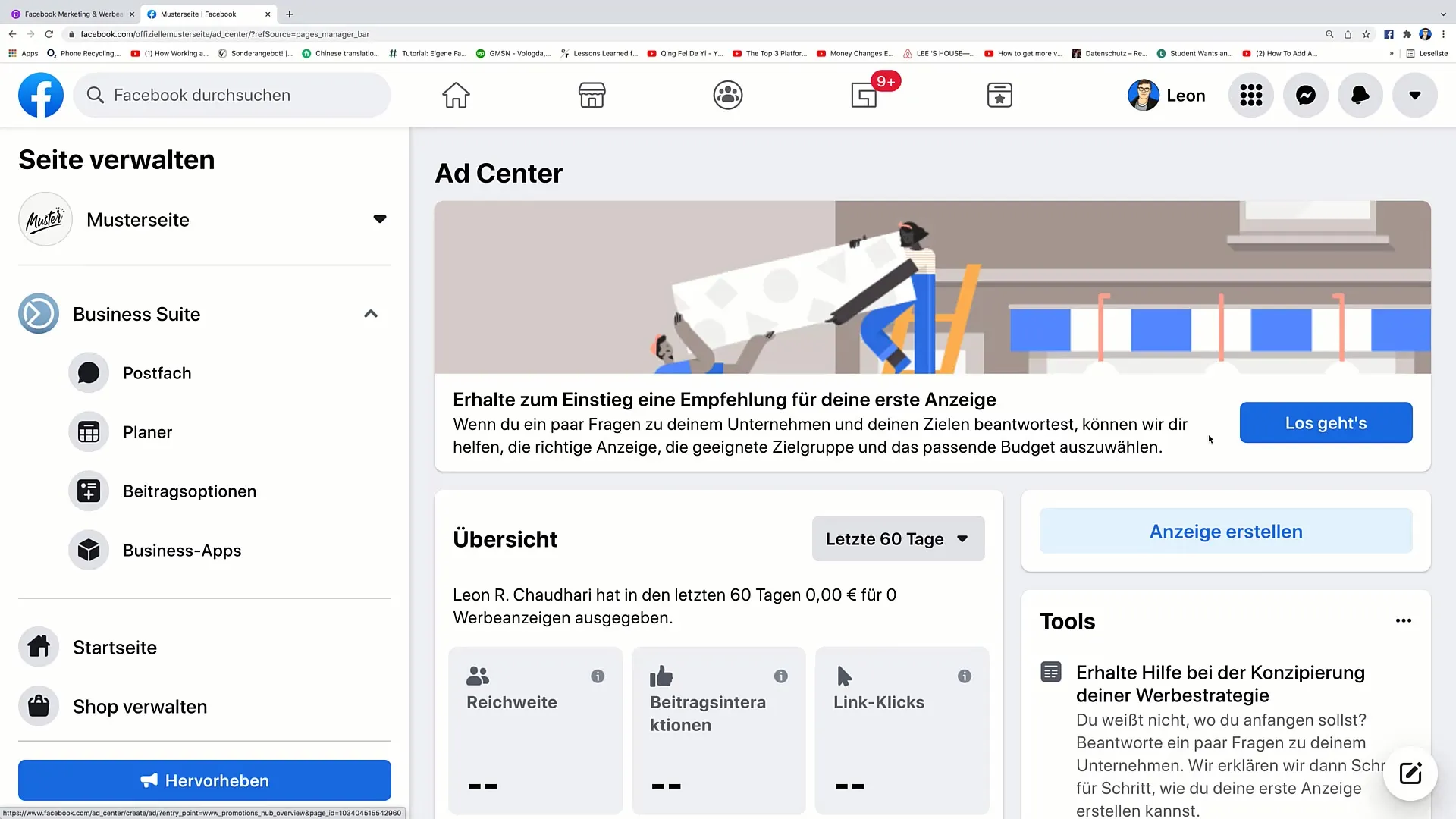
Summary
In this tutorial, you learned how to effectively use the different functions of the Facebook homepage. From managing your shop to using the Messenger tools, to managing job ads, and analyzing your page's performance - you've heard everything to optimize your marketing strategies on Facebook.
Frequently Asked Questions
What are the Messenger tools on Facebook?The Messenger tools allow you to communicate directly with visitors of your page via Messenger.
How do I create a job ad on Facebook?Click on "Create job ad" and enter the necessary details such as title, description, and salary level.
What are "Insights" on Facebook?Insights are analytical tools that allow you to see the performance of your page and understand how users interact with your page.
How can I set up automated responses?Go to the to-do lists and add frequently asked questions to create automated responses.
How do I optimize my Facebook ads?Use the Ads Manager for more advanced features and better targeting options.


